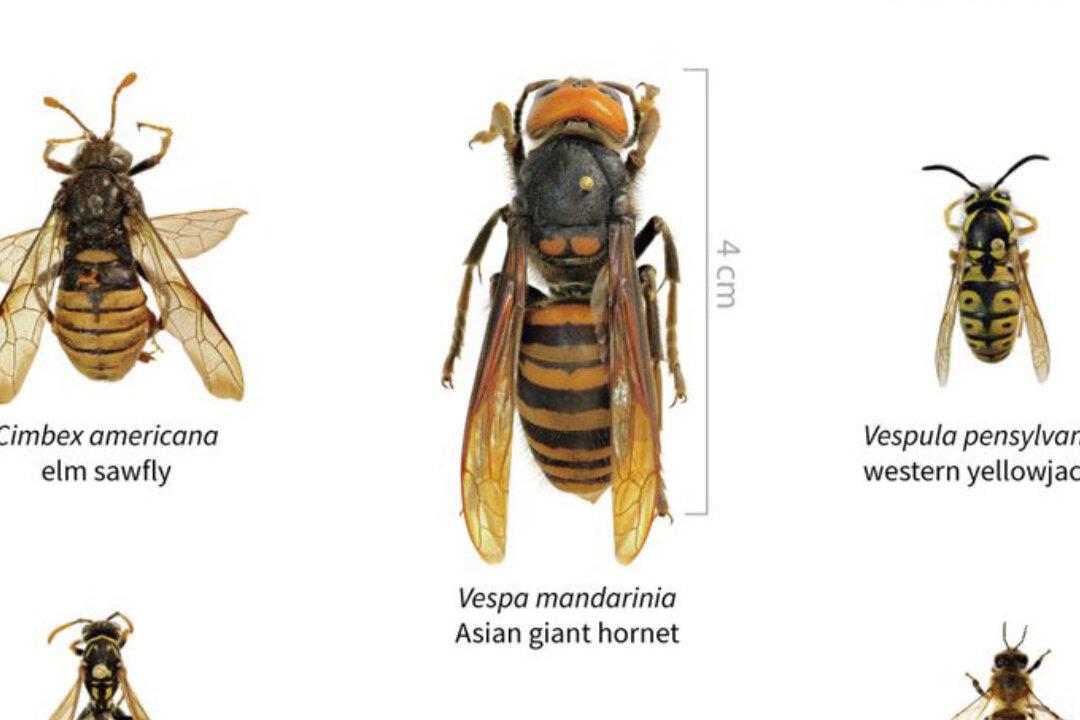The world’s largest species of hornet, which can wipe out a honeybee hive in a matter of hours, has been spotted for the first time in the United States, according to the Washington State Department of Agriculture (WSDA).
Asian giant hornets—also known as “murder hornets,” the “Giant Sparrow Bee,” and the “yak killer”—measure up to 2 inches long and prey on large insects, such as praying mantises, wasps, other hornets, and bees.




